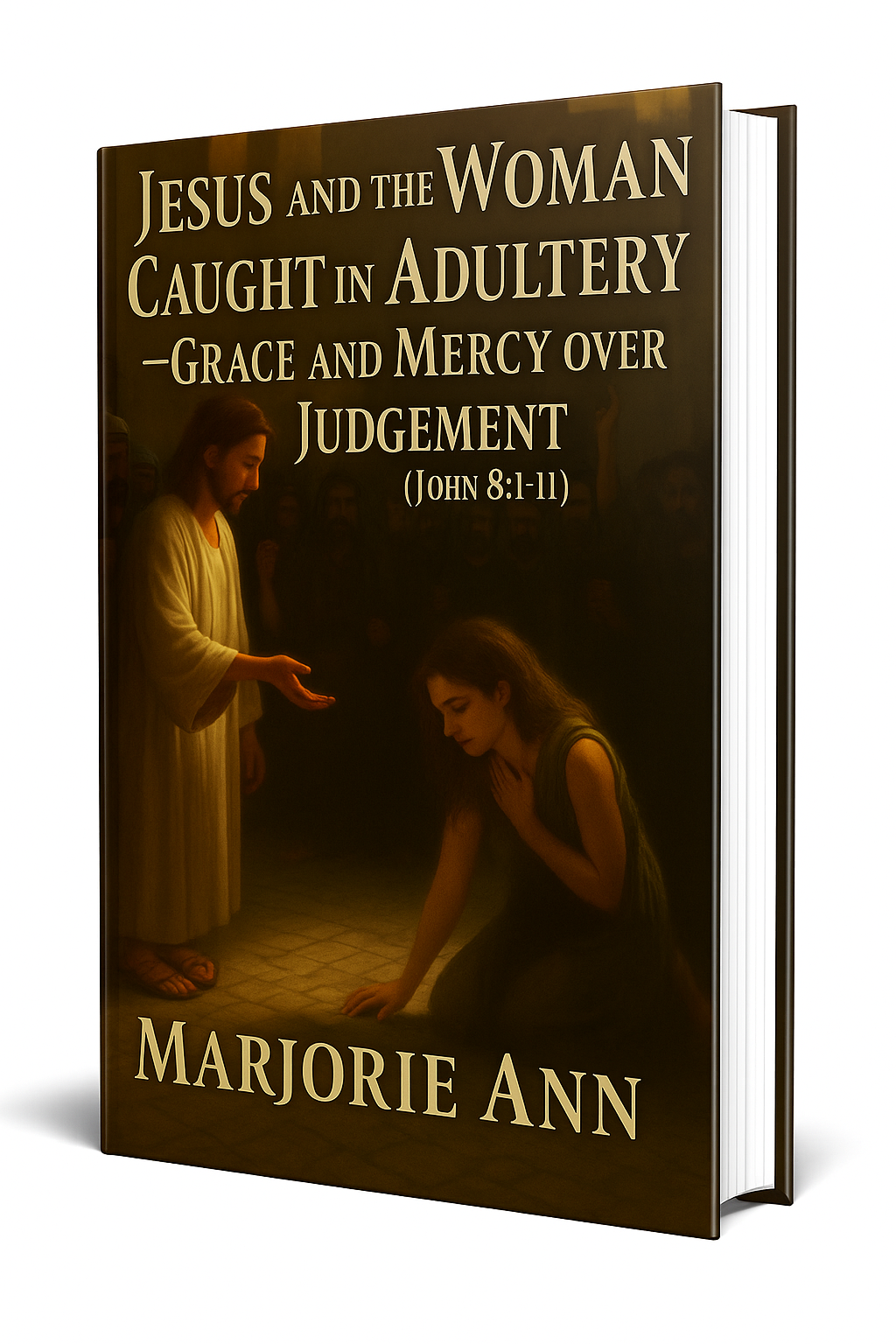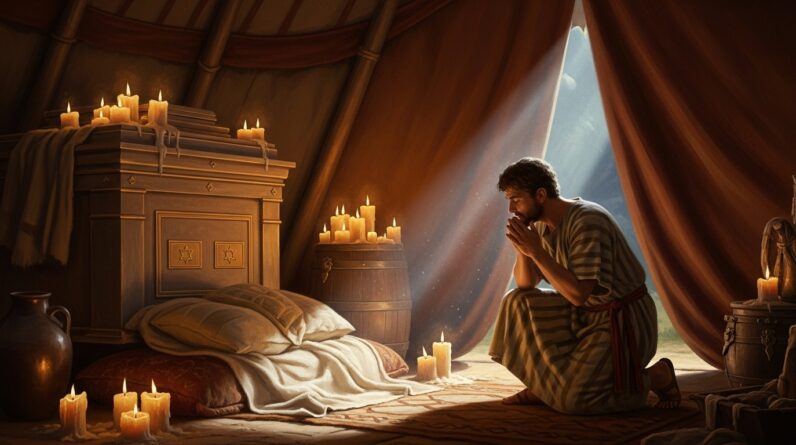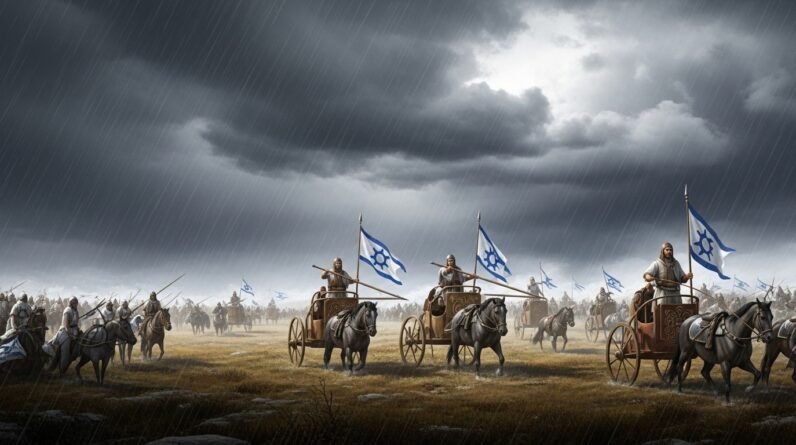Moses’ Legacy – Faith That Points To Christ Our Deliverer
You’re standing at the crossroads of history and faith when you read the story of Moses. His life is a bridge between God’s covenant with Israel and the full revelation of Christ as our Deliverer. As you walk through his story, you’ll discover how the Moses legacy of faith still shapes your life today, pointing your heart to Jesus, the One who completes what Moses foreshadowed. This article will walk you through key moments in Moses’ life, unpack how those moments point to Christ, and give practical steps for living out a faith that, like Moses’, is marked by obedience, humility, and a passion to point others to the Savior.
Moses: A Servant Chosen by God
Moses’ calling is one of the most dramatic moments in Scripture. God meets him at the burning bush and commissions him to lead His people out of slavery. You can feel the tension in the scene—Moses is reluctant, fearful, and full of excuses. Yet God insists, “Now go; I am sending you” (Exodus 3:10). That call is foundational to the Moses legacy of faith: God chooses weak, ordinary people and equips them for extraordinary work.
When you read Moses’ response, you’re also reading your own. You’ll often feel inadequate when God calls you—maybe you don’t have the education, the charisma, or the confidence you think you need. Moses’ story reassures you that God’s call is not dependent on your strengths but on His presence and promise. In fact, God doesn’t just send Moses; He promises to be with him (Exodus 3:12), and that same promise carries across the centuries to you.
The Test of Faith: Leading Out of Egypt
Leadership cost Moses everything. He confronted Pharaoh, endured doubt from the people, and led them into a wilderness full of trials. The defining moment—the crossing of the Red Sea—shows faith in action. Moses stretched out his hand, and God parted the waters so Israel could walk on dry ground (Exodus 14:21-22). That miraculous deliverance is central to the Moses legacy of faith because it demonstrates trust in God’s power when circumstances make no sense.
You’ll find that your own faith is tested in wilderness seasons. The tests aren’t meant to break you; they’re designed to reveal God’s deliverance and to deepen your trust. When you face storms, remember that God is the one who parts seas. Moses’ life teaches you to obey God’s leading even when the natural outcome looks impossible.
Faith That Sees the Invisible
Moses didn’t merely react; he trusted in a promise he could not yet see. Hebrews highlights this: “By faith Moses…by faith he left Egypt, not fearing the king’s anger; he persevered because he saw him who is invisible” (Hebrews 11:23-29). That capacity to live by sight of God rather than by sight of circumstances is the real lesson you inherit from Moses.
When you choose to obey God in uncertainty, you’re imitating Moses. Your faith won’t always remove the obstacles immediately, but it positions you to experience God’s presence and power. The Moses legacy of faith encourages you to fix your eyes on the invisible God and trust His visible work.
Moses’ Role as Prophet and Mediator
Beyond being a leader, Moses served as a mediator between God and His people. You see this most poignantly when Israel sinned with the golden calf. Moses interceded, pleading with God not to abandon the nation (Exodus 32:11-14). His intercession reflects a heart that refuses to give up on God’s promises for the sake of others.
That intercessory heart is central to the Moses legacy of faith. Moses models how to stand in the gap for people—how to plead, persist, and advocate before God. For you, that means praying for your family, community, and leaders with the persistence Moses showed, trusting that God listens and responds.
The Law as a Shadow of Christ
Moses gave the Law, which shaped Israel’s identity and ethics. But the Law was never the final word; it was a tutor pointing to something greater. Hebrews tells us the Law is a shadow of the good things that are coming—not the realities themselves (Hebrews 10:1). Paul likewise explains that the Law was our guardian until Christ came (Galatians 3:24).
When you consider the Moses legacy of faith, you recognize that Moses’ role was to point God’s people to obedience and to prepare them for the fullness of God’s redemptive plan. The Law taught holiness and exposed sin; Christ completed it by providing grace, forgiveness, and a new heart. You can honor Moses by embracing the Law’s moral truths while celebrating Christ’s fulfillment of its demands.

From Deliverer to Deliverer: Moses Pointing to Christ
Moses is a figure who foreshadows Christ in many ways. Moses’s leadership, intercession, and role as mediator all prepare the way for Jesus, who is the ultimate Deliverer. Scripture explicitly links the two: Peter reminds believers that Moses said a prophet like him would come, and the people were to listen (Acts 3:22-23). That prophetic promise finds its fulfillment in Jesus.
You’re blessed by the continuity: Moses brings deliverance from Egyptian bondage, and Jesus brings deliverance from bondage to sin. The Moses legacy of faith carries forward into Christ. When you look back at Moses, you’re looking forward to the One who completes the story.
The Passover and Christ the Lamb
One of the most vivid pictures of Jesus in the Old Testament is the Passover. The blood of the lamb protected Israel from death (Exodus 12:1-14). In the New Testament, Paul identifies Christ as our Passover lamb who was sacrificed for us (1 Corinthians 5:7). John the Baptist declares Jesus as “the Lamb of God, who takes away the sin of the world” (John 1:29).
When you celebrate Communion or remember the cross, you’re connecting Christ’s sacrifice to the patterns Moses established. The Moses legacy of faith includes these shadows that God used to prepare His people for the ultimate rescue. You don’t worship the shadow; you worship the substance—the Lamb who saves.
Moses’ Intercession and Jesus’ High Priesthood
Moses frequently interceded for Israel, pleading with God to be merciful. His example anticipates Christ’s role as the perfect mediator. Hebrews explains that Jesus, unlike other priests, can save completely because He lives forever to intercede for you (Hebrews 7:25). The tabernacle and sacrificial system that Moses established pointed forward to Christ’s once-for-all sacrifice (Hebrews 9:11-15).
You can see in Moses the heart of someone who pleads with God on behalf of others, and in Jesus the One who finished the work. The Moses legacy of faith invites you to pray boldly, knowing that Christ intercedes for you and that your prayers have the power of the risen Savior standing before the Father.
The Tabernacle and the Temple of the Heart
God gave Moses precise instructions to build the tabernacle—a place where God would dwell among His people (Exodus 25:8-9). The tabernacle was a portable sanctuary, symbolizing God’s willingness to live with His people in their journey. In the New Testament, John tells us that the Word became flesh and “dwelt among us” (John 1:14). Later, Paul reminds believers that we are God’s temple, and God’s Spirit dwells in you (2 Corinthians 6:16).
You’re called to be a living tabernacle. The Moses legacy of faith included building a place for God’s presence; your legacy is to cultivate a heart where God dwells. Worship, obedience, and holiness are ways you keep that dwelling place ready for God’s presence.
Lessons for Your Walk of Faith
Moses’ life gives you practical lessons for a faithful walk. He teaches you humility in leadership, courage in obedience, persistence in prayer, and a single-minded focus on the promise of God. These are not abstract virtues—they’re practical habits you can cultivate daily.
Let the Moses legacy of faith shape your walk by bringing concrete practices into your life: an unwavering trust in God’s presence, courage to obey His call, willingness to intercede for others, and a heart that always points to Christ. Moses’ legacy challenges you to be more than a spectator of faith; it calls you to be a participant in God’s redeeming work.
Obedience Before Understanding
You’ll often be called to obey before you fully understand God’s plan. Moses obeyed before he saw the full picture. God told him to go to Pharaoh and demand Israel’s release, and Moses obeyed despite his uncertainties (Exodus 3:10). That posture—obedience before full understanding—is a hallmark of faithful living.
When you obey God in small ways, you train yourself to obey in big ways. Obedience positions you for God’s power to be revealed. Don’t wait for perfect clarity to act; step forward in faith, trusting that God will guide your next steps.
Perseverance Through the Wilderness
Leading the people through the wilderness tested Moses’ endurance. The Israelites complained, feared, and even wanted to return to Egypt. Moses had to lead them through stubbornness, scarcity, and disappointment. That perseverance is part of the Moses legacy of faith, and it’s a model for you when you face long seasons of waiting.
Scripture encourages you to run with perseverance the race set before you (Hebrews 12:1). Your wilderness seasons are not wasted; they’re training grounds for faith and character. Keep your eyes on the promise, and trust God’s timing.

How Moses’ Legacy of Faith Helps You Point Others to Christ
Moses lived to serve a people and to point them toward God’s promises. The ultimate purpose of his leadership was not to be remembered for his own greatness but to prepare the way for God’s saving work. You can do the same: your life should point people to Christ, the final Deliverer.
The Moses legacy of faith encourages you to live with intentionality. Share your testimony, teach truth, model obedience, and pray for others. Just as Moses interceded and taught the law to guide Israel, you are called to make disciples and point people to Jesus. When you live like that, your life becomes a living sermon that echoes the Great Commission (Matthew 28:19-20).
Practical Steps to Live Out the Legacy
You don’t have to be a Moses to make an impact. The steps are simple and doable:
- Read and meditate on Scripture so your life is rooted in God’s truth (Deuteronomy 6:6-7).
- Commit to consistent prayer so you intercede like Moses for those God puts on your heart.
- Serve with humility and obedience, trusting God to use your small acts for His big purposes.
- Share the gospel and disciple others in practical, loving ways—teach them to obey what Christ commanded (Matthew 28:19-20).
When you take these steps, you’re actively living the Moses legacy of faith. You may not see immediate results, but remember that faithfulness often bears fruit over time.
The Heart of Leadership: Humility and Dependence
Moses’ leadership was remarkable because it was marked by humility. He didn’t seek personal glory; he sought God’s reputation. God’s statement about Moses at the end of his life is striking: “Since then, no prophet has risen in Israel like Moses, whom the LORD knew face to face” (Deuteronomy 34:10). That intimate relationship with God was the source of Moses’ authority and effectiveness.
You are most influential when you lead from a posture of dependence on God. The Moses legacy of faith shows that true leadership isn’t about controlling circumstances; it’s about pointing people to the Lord and relying on Him for every step.
Your Legacy: Passing the Torch
Moses didn’t hold on to power; he prepared Joshua to lead the next generation. That willingness to pass the torch is part of a faithful legacy. He gave final instructions and transferred leadership with clarity and grace. You can learn from Moses by investing in those who will follow you—mentoring, teaching, and modeling the way.
As you invest in others, you participate in God’s ongoing work across generations. The Moses legacy of faith is not static; it moves forward when you intentionally equip the next generation to know and follow Christ.
When You Feel Inadequate, Remember Moses
You’ll have moments when doubts and fears creep in. Moses did, too. He questioned his mouth, his message, and his ability to lead. Yet God used him mightily. Whenever you feel inadequate, remember that God delights in using the unlikely to display His power. Moses’ story gives you permission to trust God and step into the calling He gives you.
The Scriptures encourage perseverance and faith, reminding you that saints in the past endured by faith (Hebrews 11:23-29). You’re part of that story. The Moses legacy of faith lives on in you when you choose trust over fear.
How Christ Completes Moses’ Work
Moses pointed Israel toward God’s righteousness and a life shaped by covenant. Jesus came to fulfill and complete that work. He did what the Law could only foreshadow: He lived perfectly, died sacrificially, and rose victoriously. Where Moses gave laws and led out of bondage, Christ provides new life and an eternal covenant.
The connection between Moses and Christ is not merely historical; it’s theological. Moses prepared the people for God’s redemptive work; Jesus is the Lamb who accomplishes it. When you embrace Christ, you step into the fullness of what Moses began.
Living the Legacy Today
So what does the Moses legacy of faith look like in your everyday life? It looks like faithful obedience when you’d rather hesitate. It looks like persistent prayer when the world grows loud. It looks like generosity and justice when culture tempts you to compromise. It looks like pointing people not to yourself or to a system, but to Christ.
Be intentional about seeing your life as part of a grand story. Moses’ life was not random; it was woven into God’s plan. Your life is, too. Take practical steps—read Scripture, pray without ceasing, serve sacrificially, and invest in others. When you do, you continue the legacy that began with Moses and finds its fulfillment in Jesus.
Conclusion: Embrace the Moses’ Legacy of Faith
When you embrace the Moses legacy of faith, you accept God’s call to be part of His redemptive story. Moses teaches you how to trust God, lead with humility, intercede persistently, and point others toward the Deliverer. The life of Moses was not the final chapter; it was a powerful movement toward Christ, who fulfills and surpasses the shadows and types of the Old Testament.
You’re invited to take up that same commitment: live by faith, not sight; lead with humility; love God’s people; and always point to Jesus, the true Deliverer. Let Moses’ life inspire you, and let Christ’s work complete you.
Explore More
For further reading and encouragement, check out these posts:
👉 7 Bible Verses About Faith in Hard Times
👉 Job’s Faith: What We Can Learn From His Trials
👉 How To Trust God When Everything Falls Apart
👉 Why God Allows Suffering – A Biblical Perspective
👉 Faith Over Fear: How To Stand Strong In Uncertain Seasons
👉 How To Encourage Someone Struggling With Their Faith
👉 5 Prayers for Strength When You’re Feeling Weak

📘 Jesus and the Woman Caught in Adultery – Grace and Mercy Over Judgement
A powerful retelling of John 8:1-11. This book brings to life the depth of forgiveness, mercy, and God’s unwavering love.
👉 Check it now on Amazon
As a ClickBank Affiliate, I earn from qualifying purchases.
Acknowledgment: All Bible verses referenced in this article were accessed via Bible Gateway (or Bible Hub).
“Want to explore more? Check out our latest post on Why Jesus? and discover the life-changing truth of the Gospel!”








